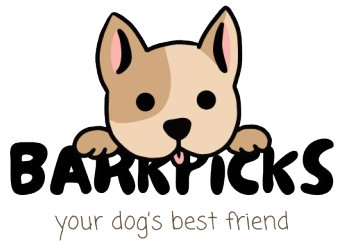The Irish Wolfhound is one of the most awe-inspiring and noble dog breeds, known for its towering height, gentle nature, and deep historical roots. Often referred to as the “gentle giant,” the Irish Wolfhound is the tallest of all dog breeds and possesses a calm, dignified temperament that belies its powerful size. Bred originally for hunting wolves and large game, this majestic breed is now cherished as a devoted and affectionate family companion.
Ancient Origins and History
The Irish Wolfhound has a long and storied past, with origins dating back thousands of years. These massive hounds were once bred by the Celts in Ireland and were prized for their ability to hunt wolves, elk, and even wild boar. Their strength, speed, and bravery made them formidable hunters and valued war dogs.
Historical records from as early as 391 AD show that the Roman consul received seven of these great hounds as gifts, and they were described as being awe-inspiring and noble even then. Irish Wolfhounds were often given as royal gifts throughout Europe and held in high esteem by nobility and warriors.
Unfortunately, by the 18th century, with the extinction of wolves in Ireland and changes in hunting practices, the breed began to decline. The Irish Wolfhound was revived in the 19th century through careful breeding, largely thanks to Captain George Augustus Graham, who worked to restore the breed using the remaining specimens and outcrosses with similar large breeds.
Physical Characteristics
The Irish Wolfhound is renowned for its gigantic stature and impressive build. It is the tallest of all dog breeds, with some individuals standing over 35 inches (89 cm) at the shoulder and weighing between 105 to 180 pounds (48 to 82 kg).
Key features include:
- Body: Long, muscular, and slightly arched back
- Coat: Rough and wiry, typically medium length
- Colors: Grey, brindle, red, black, white, and fawn
- Head: Long and slightly pointed with small, folded ears
- Tail: Long and slightly curved, covered with rough hair
Despite their imposing appearance, Irish Wolfhounds move with a graceful and easy gait, displaying both power and elegance.
Temperament and Personality
Irish Wolfhounds are known for their gentle and calm nature. They are often described as having a noble and dignified demeanor, making them a favorite among those looking for a well-mannered, affectionate companion.
Temperament highlights include:
- Gentle and affectionate: They form strong bonds with their families and are especially patient with children.
- Calm and quiet: Despite their size, they are not boisterous or overly active indoors.
- Loyal and dignified: They are devoted to their people but typically reserved with strangers.
- Not aggressive: While they can be protective, aggression is not characteristic of the breed.
They are generally not suited for guarding due to their friendly nature but can deter intruders simply by their sheer size.
Exercise and Training
While the Irish Wolfhound is not hyperactive, it does need regular exercise to maintain its health and muscle tone. Daily walks and space to stretch their legs in a secure area are important.
As a sighthound, they may chase after fast-moving animals, so a fenced yard or leash walking is essential. They enjoy open areas to trot and roam but are usually content to rest and relax indoors.
Training should be:
- Gentle and consistent
- Based on positive reinforcement
- Focused on socialization early on to help them feel confident
Due to their large size, it is especially important to train them while they are still young and manageable.
Grooming and Health
The Irish Wolfhound’s coat requires moderate grooming. A good brushing once or twice a week helps to keep their coat clean and free of loose hair. Occasional hand-stripping may help maintain the coat’s texture.
Health considerations:
- Short lifespan: Typically around 6 to 8 years
- Common health issues: Dilated cardiomyopathy, bone cancer (osteosarcoma), bloat (gastric torsion), and hip dysplasia
- Regular vet checkups, a nutritious diet, and moderate exercise are key to helping them live a healthy life.
Puppies grow rapidly, and care must be taken during the growth phase to avoid joint damage and over-exercise.
Ideal Home and Family
Irish Wolfhounds thrive in:
- Spacious homes with room to stretch out
- Families who are home often, as they crave companionship
- Calm households, as they are sensitive and don’t respond well to chaotic environments
They do well with children and other dogs, particularly if raised with them. However, due to their size, supervision around small children is important to avoid accidental injury.
Conclusion
The Irish Wolfhound is a truly unique and special breed — regal in appearance, kind in spirit, and noble in character. Their size may be imposing, but their hearts are gentle and loyal. For those who can accommodate their physical needs and offer a loving home, the Irish Wolfhound offers unwavering companionship and quiet devotion. They are not just pets, but noble friends who bring history, heart, and dignity into the lives of those lucky enough to call them family.







